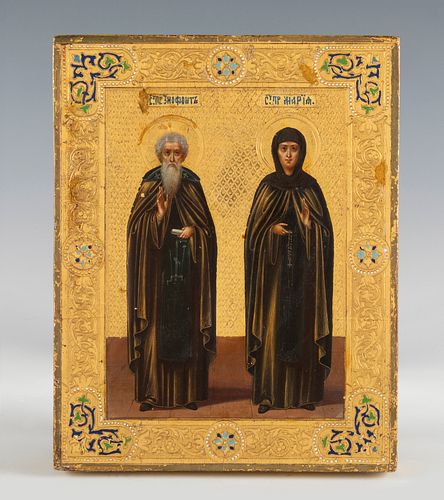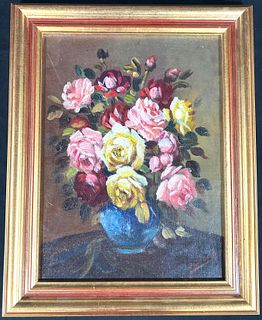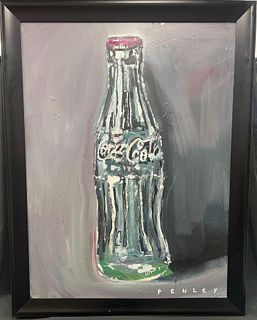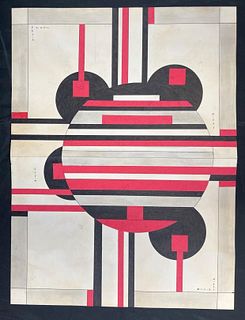Russian school, second half of the 19th century. "Saint Xenophon and Mary". Oil, gold leaf on board.
Lot 113
About Seller
Setdart Auction House
Carrer Aragó 346
Barcelona
Spain
Setdart Subastas was born in 2004 and is currently the first online art auction in Spain with solidity, prestige and reliability guaranteed by our more than 60,000 users. Setdart has a young, dynamic and enterprising team ready to successfully manage the purchase and sale of art works through custom...Read more
Estimate:
EUR€1,000 - EUR€1,200
$1,020.41 - $1,224.49
Absentee vs Live bid
Two ways to bid:
- Leave a max absentee bid and the platform will bid on your behalf up to your maximum bid during the live auction.
- Bid live during the auction and your bids will be submitted real-time to the auctioneer.
Bid Increments
| Price | Bid Increment |
|---|---|
| EUR€0 | EUR€10 |
| EUR€200 | EUR€25 |
| EUR€500 | EUR€50 |
| EUR€1,000 | EUR€100 |
| EUR€3,000 | EUR€200 |
| EUR€5,000 | EUR€500 |
| EUR€10,000 | EUR€1,000 |
| EUR€20,000 | EUR€2,000 |
| EUR€50,000 | EUR€5,000 |
About Auction
By Setdart Auction House
Nov 3, 2021
Set Reminder
2021-11-03 08:00:00
2021-11-03 08:00:00
America/New_York
Bidsquare
Bidsquare : OLD MASTERS
https://www.bidsquare.com/auctions/setdart-auction-house/old-masters-7786
Setdart Auction House sofia@setdart.com
Setdart Auction House sofia@setdart.com
- Lot Description
Russian school, second half of the 19th century. "Saint Xenophon and Mary". Oil, gold leaf on board. Measurements: 18 x 14 cm. The venerable Xenophon and his wife Mary, and their sons Arcadius and John, were noble citizens of Constantinople in the 5th century. Despite their wealth and nobility, they were distinguished by spiritual simplicity and kindness. Wishing to give their sons a better education, they sent them to the Phoenician city of Beirut. Unfortunately, the ship, on which the two brothers had sailed, was shipwrecked. They were tossed by the waves to different parts of the shore. Grief-stricken by their separation, the brothers consecrated themselves to God and accepted monasticism. The parents received no news of their sons for a long time and considered them perished. But Xenophon, now an old man, kept faith in the Lord, comforted his wife Mary and advised her not to grieve and to believe, that the Lord would protect their children. Several years later, the couple went on pilgrimage to holy places and by chance met their children in Jerusalem, who at that time were already ascetics in various monasteries. Out of the joy of what happened and in gratitude to God, Xenophon and Mary accepted monasticism, and dedicated their entire lives to Christianity. The monks Arcadius and John, after bidding farewell to their parents, ascended to the desert, where, after long ascetic acts, they became famous for the gift of wonder-working and penetration. The venerable elders Xenophon and Mary also received the gift of miracles from God, performing asceticism in silence and strict fasting. In the Orthodox cult, the venerable Xenophon and Mary are the protectors of all the missing. In iconographic terms, the most common representation of these two saints is with their two children. However, representations, such as the one in the auctioned lot, are also acceptable in traditional iconography. This icon, executed in oil on panel, presents fine decorative elements, which simulate enameling. Vibrant golden background, it adds light, and symbolizes the divine radiance. A series of signs, although very subtle and almost diluted in the traditional iconography, such as, for example, the blessing with two fingers and the eight-point cross visible on the chiton of Saint Xenophon, indicate that the present icon could have been produced in the workshops of the Old Believers.
- Shipping Info
-
In-house shipping available. Please inquire at admin@setdart.com.
-
- Buyer's Premium



 EUR
EUR CAD
CAD AUD
AUD GBP
GBP MXN
MXN HKD
HKD CNY
CNY MYR
MYR SEK
SEK SGD
SGD CHF
CHF THB
THB

















